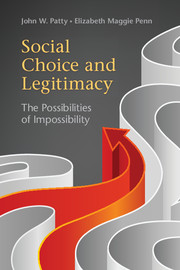10 - Administrative Legitimacy
Published online by Cambridge University Press: 05 August 2014
Summary
Measured by the size of their impacts on the everyday life of most citizens, the legislature, executive, and judicial branches garner a disproportionately large share of scholarly attention relative to that received by the “administrative branch,” the corpus of government composed of hundreds of agencies, commissions, quasi-governmental authorities, and public corporations. These organs of the state are the center of both interpretation and enforcement of the federal government's policies. Leaving aside issues of whether they must necessarily be such, the practical reality is that all interaction between the government and its citizenry involves administrators, whereas a relatively small proportion of government actions are the direct consequence of any decision made by elected representatives or federal judges. While much of public administration is focused on seemingly mundane tasks, the administrative branch is unique in the frequency with which it interacts directly with the citizens. Congruence between government actions and popular will is properly measured relative to administrators' decisions and the explanations offered for these decisions. Viewed from another angle, the congruence between policy outcomes as experienced by the citizens and the policy decisions of the three traditional branches of government depends on the actions and decisions of the administrative branch.
- Type
- Chapter
- Information
- Social Choice and LegitimacyThe Possibilities of Impossibility, pp. 162 - 188Publisher: Cambridge University PressPrint publication year: 2014

